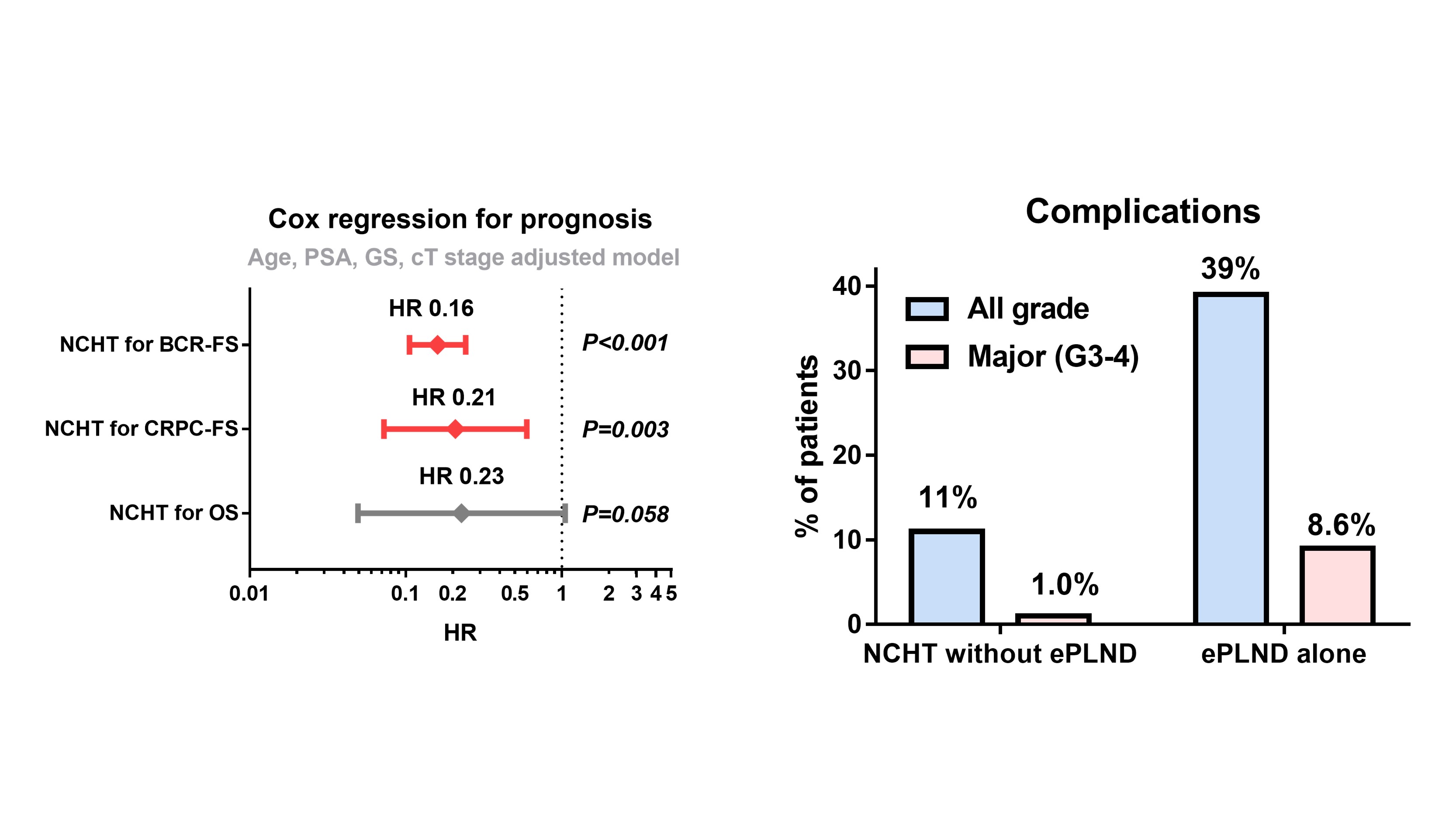Back
Poster, Podium & Video Sessions
Moderated Poster
MP15: Prostate Cancer: Localized: Surgical Therapy I
MP15-13: Outcomes comparison between the robot-assisted radical prostatectomy with extended pelvic lymph node dissection and neoadjuvant chemohormonal therapy without extended pelvic lymph node dissection in patients with organ confined high-risk prostate cancer
Friday, May 13, 2022
2:45 PM – 4:00 PM
Location: Room 222
Shingo Hatakeyama*, Hirosaki, Japan, Ryuji Tabata, Daiji Fujimori, Mamoru Fukuda, Tetsuo Shinozaki, Ageo, Japan, Hiromichi Iwamura, Teppei Okamoto, Takahiro Yoneyama, Hirosaki, Japan, Satoshi Sato, Ageo, Japan, Chikara Ohyama, Hirosaki, Japan
- SH
Shingo Hatakeyama, MD
Dept. of Urology, Hirosaki University Graduate School of Medicine
Poster Presenter(s)
Introduction: Impact of extended pelvic lymph node dissection (ePLND) on oncological outcomes in patients with organ confined high-risk prostate cancer (PC) remains unclear. We aimed to compare the outcomes between the robot-assisted radical prostatectomy (RARP) with ePLND and neoadjuvant chemohormonal therapy (NCHT) plus RARP without ePLND in patients with organ-confined high-risk PC.
Methods: We retrospectively evaluated 419 patients with high-risk PC (any of PSA >20 ng/mL, Gleason score 8-10, or cT2c-3) treated with RARP between Jan. 2012 and Feb. 2021. Patients were divided into two groups: RARP plus ePLND (ePLND group) and NCHT plus RARP without ePLND (NCHT group). We compared the complication rate (Clavien-Dindo classification), biochemical recurrence-free survival (BCR-FS), castration-resistant prostate cancer-free survival (CRPC-FS), and overall survival (OS) between the groups. Multivariable Cox regression analysis was performed to assess the impact of NCHT on prognosis.
Results: We identified 117 and 302 patients in the ePLND and NCHT groups, respectively. The postoperative complication rate was significantly higher in the ePLND group than that in the NCHT group (P <0.001). BCR-FS, CRPC-FS, and OS were significantly longer in the NCHT group than those in the ePLND group. Multivariate Cox regression analyses showed that NCHT was significantly reduced the risk of BCR (hazard ratio: HR 0.16, P<0.001) and CRPC progression (HR 0.21, P=0.003), but not for OS (HR 0.23, P=0.058). Any grade and major complication rate of the ePLND group was significantly higher (39% and 8.6%, respectively) than those in the NCHT group (11% and 1%, respectively).
Conclusions: NCHT without ePLND may reduce the risk of postoperative complications, BCR, and CRPC progression in patients with organ-confined high-risk PC treated with RARP.
Source of Funding: None

Methods: We retrospectively evaluated 419 patients with high-risk PC (any of PSA >20 ng/mL, Gleason score 8-10, or cT2c-3) treated with RARP between Jan. 2012 and Feb. 2021. Patients were divided into two groups: RARP plus ePLND (ePLND group) and NCHT plus RARP without ePLND (NCHT group). We compared the complication rate (Clavien-Dindo classification), biochemical recurrence-free survival (BCR-FS), castration-resistant prostate cancer-free survival (CRPC-FS), and overall survival (OS) between the groups. Multivariable Cox regression analysis was performed to assess the impact of NCHT on prognosis.
Results: We identified 117 and 302 patients in the ePLND and NCHT groups, respectively. The postoperative complication rate was significantly higher in the ePLND group than that in the NCHT group (P <0.001). BCR-FS, CRPC-FS, and OS were significantly longer in the NCHT group than those in the ePLND group. Multivariate Cox regression analyses showed that NCHT was significantly reduced the risk of BCR (hazard ratio: HR 0.16, P<0.001) and CRPC progression (HR 0.21, P=0.003), but not for OS (HR 0.23, P=0.058). Any grade and major complication rate of the ePLND group was significantly higher (39% and 8.6%, respectively) than those in the NCHT group (11% and 1%, respectively).
Conclusions: NCHT without ePLND may reduce the risk of postoperative complications, BCR, and CRPC progression in patients with organ-confined high-risk PC treated with RARP.
Source of Funding: None


.jpg)
.jpg)